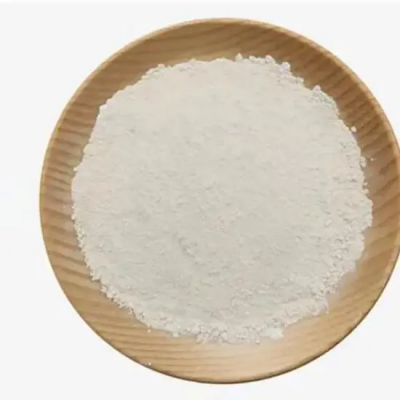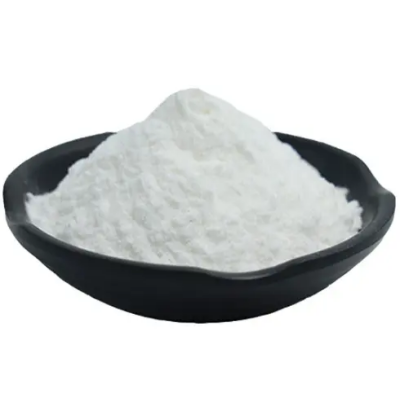Trifluoromethanesulfonic anhydride CAS:358-23-6
N-Trifluoromethanesulfonic anhydride (Tf2O) is characterized by its molecular structure, featuring two trifluoromethanesulfonyl (-CF3SO2) groups linked by an oxygen atom. This configuration grants Tf2O exceptional reactivity and stability, making it a preferred reagent in challenging synthetic transformations. Tf2O is typically handled as a clear, colorless liquid with a high boiling point and exhibits strong solubility in organic solvents such as dichloromethane and chloroform. Its stability under various conditions, coupled with its powerful acidity, enhances its utility in complex organic syntheses requiring precise control over reaction conditions. Uses Organic Synthesis: Tf2O serves as a versatile reagent in organic synthesis, particularly in reactions requiring strong electrophilic activation. It is commonly employed in the acylation of alcohols, amines, and phenols to form esters, amides, and sulfonamides, respectively. This capability is crucial for the development of pharmaceutical intermediates, agrochemicals, and advanced materials with tailored properties. Polymer Chemistry: In polymerization processes, Tf2O facilitates the modification of polymer chains through sulfonation reactions, improving polymer solubility, stability, and functionality. Its ability to introduce sulfonic acid groups enhances polymer performance in various industrial applications, including coatings, membranes, and ion exchange resins. Fine Chemicals: Tf2O finds application in the synthesis of fine chemicals such as dyes, pharmaceutical intermediates, and specialty reagents. Its selective reactivity enables precise functionalization of organic molecules, crucial for enhancing biological activity and chemical stability in final products. Synthesis Trifluoromethanesulfonic anhydride is synthesized through the reaction of trifluoromethanesulfonic acid (TfOH) with acetic anhydride. This process involves the controlled addition of acetic anhydride to TfOH under anhydrous conditions, leading to the formation of Tf2O and acetic acid as a byproduct. The reaction typically requires careful temperature control and inert atmosphere to prevent unwanted side reactions and ensure high yield of Tf2O. Purification techniques such as distillation or solvent extraction are employed to isolate Tf2O in high purity suitable for industrial applications. In summary, trifluoromethanesulfonic anhydride is a versatile and powerful reagent extensively used in organic synthesis, polymer chemistry, and the production of fine chemicals. Its robust reactivity, stability, and selective functionalization capabilities make it indispensable in advancing technologies across diverse industrial sectors and scientific disciplines. The controlled synthesis and precise application of Tf2O contribute significantly to the development of innovative materials and compounds with enhanced performance and functionality.



| Composition | C2F6O5S2 |
| Assay | 99% |
| Appearance | white powder |
| CAS No. | 358-23-6 |
| Packing | Small and bulk |
| Shelf Life | 2 years |
| Storage | Store in cool and dry area |
| Certification | ISO. |







![4-[6-[(6-Bromo-8-cyclopentyl-7,8-dihydro-5-methyl-7-oxopyrido[2,3-d]pyrimidin-2-yl)amino]-3-pyridinyl]-1-piperazinecarboxylic acid 1,1-dimethylethyl ester CAS:571188-82-4](https://cdn.globalso.com/xindaobiotech/4TKVL5Q89BB3YO78KWAG236.png)
![spiro[indoline-3,4'-piperidin]-2-one CAS:252882-61-4](https://cdn.globalso.com/xindaobiotech/20KKQ1ROFEVXI9DUBYB129.png)
